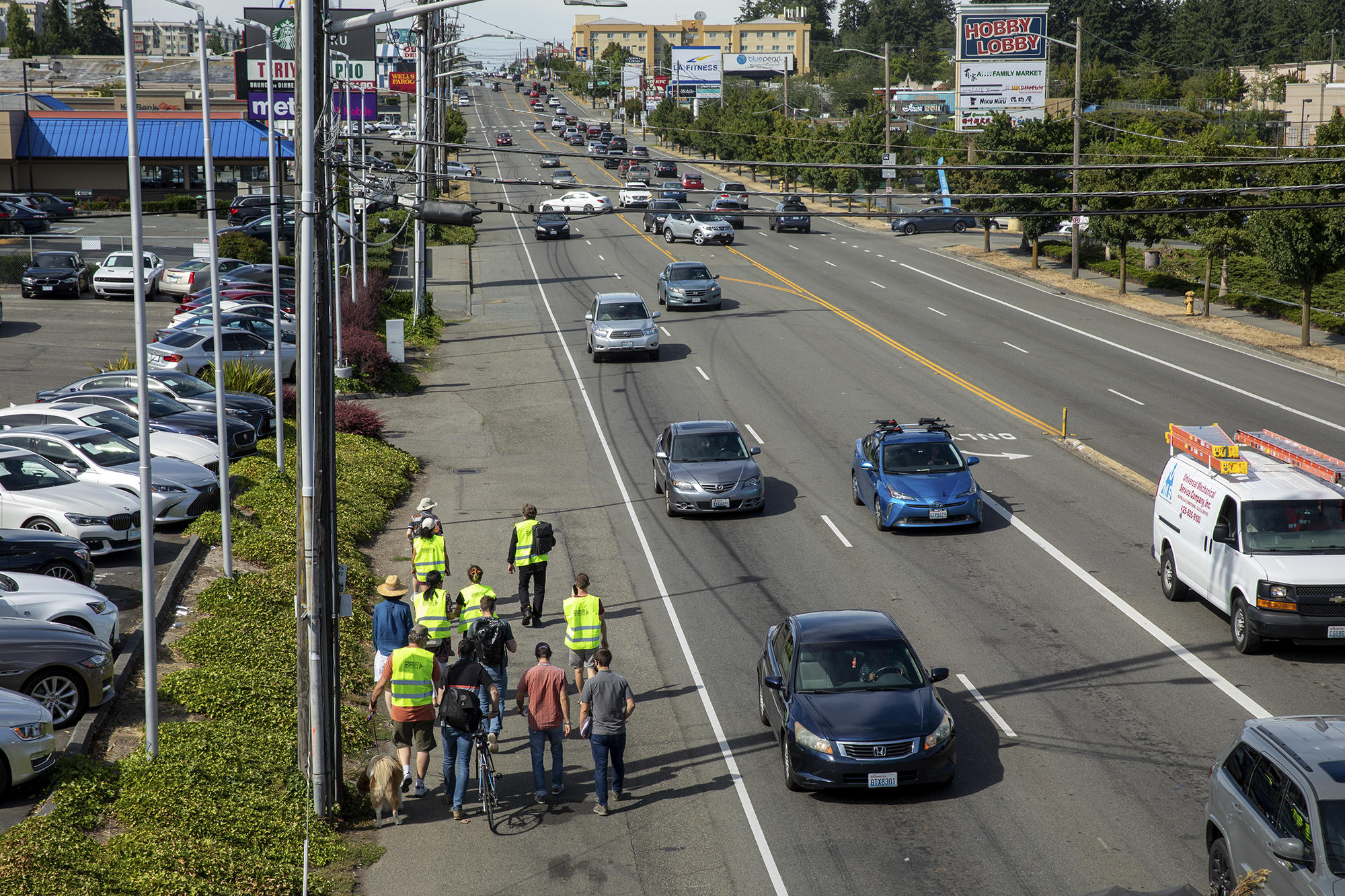
Not just an infrastructure problem
“We have to look at ways to redesign the road so people aren't inclined to drive so fast,” said Allison Schwartz, the Vision Zero coordinator at SDOT. “We have a lot of tools that we know work; we need to pursue them more aggressively.”
Reversing decades of thinking that focused street design on vehicle speeds and throughput won’t happen overnight, she said. And that change will take political will and acceptance from communities, she added, but also getting people out of cars with a robust transit system.
“If we want to reduce our fatalities and our serious injuries,” Schwartz said, “I think it’s very much tied to making sure we are increasing reliable and affordable transit options.”
It’s a step in the right direction to talk about redesigning the road system, said Zivarts.
“But we need to be talking about more than just infrastructure, but also how different modes are prioritized and how it feels to be in a space as a pedestrian,” Zivarts said.
These days the streets belong to vehicles and not people. When they closed her street for a block party, it brought families and kids together.
“These are kids, even though we all live on the same block, who don't all get to hang out, especially the younger ones, who aren't allowed to walk down the block on their own,” Zivarts said. “And it made me realize how different communities and neighborhoods must have felt before parents had to worry about cars.”
She also wants the city to add crosswalks to ensure people don’t have to walk far to find one and complete the sidewalk network, making sure it's not full of cracks and huge bumps, and providing plenty of curb ramps for Americans with Disabilities Act accessibility.
Zivart's list goes on.
This includes better connections along greenway routes, which are supposed to be low-stress streets that prioritize cyclists and pedestrians, so users don't have to dodge traffic to cross larger streets. And the list should consider limiting rights on red at more intersections, and perhaps eliminate left turns on some streets, she added.
Most mornings, Zivarts and her son trek downtown by bike from their home in the Rainier Valley. She prioritizes safety, which — in Seattle — often leaves her staring up from the bottom of some steep hills.
“I look for the routes that have the least amount of traffic and crossings that are as least sketchy as possible,” Zivarts said.
Her daily rides stopped for a time after she and her son were hit in a crosswalk near an I-5 on-ramp in Beacon Hill. Zivarts feels lucky she and her son came out unscathed. The driver, making a right on red, didn’t see her and her son as the car rolled through the crosswalk.
“It happened really slowly,” said Zivarts, “but it really freaked me out. After that I stopped biking with the kid.”
The collision with her son might have pushed Zivarts into a car for at least a while if that was an option, she said, but a vision impairment leaves her unable to drive. So instead, her morning commute became a five-mile run pushing her kid in a stroller along the way.
Eventually Zivarts got back on her bike.
“The fear sorta wears off,” she said. “And you are like: I can do this.”
South Seattle, where Zivarts was hit, carries a disproportionate number of traffic fatalities compared with other areas in the city. In many years, over twice as many people die in collisions in City Council District 2, which includes Rainier Valley, SoDo, and parts of the Chinatown-International District, as in any other district in the city.
During the first half of 2021, more than half of all Seattle traffic fatalities occurred in District 2. Two-thirds of those involved a pedestrian or cyclist.
The south end of Seattle is an underserved community, said Phyllis Porter, a transportation access and equity advocate. Fewer resources are spent in the area.
Porter helped push for reduced speed limits in the city after seeing a vehicle crash into two businesses in Columbia City. She and other transportation activists observe drivers still speeding down Rainier, some using the new bus and center turn lanes as a passing lane.
To reduce traffic deaths, people in the community need to do their part by slowing down, Porter added. “They have to obey the laws that have been set to keep them safe,” she said.
And SDOT and the city need to appropriate the money for safety projects to show “they value the survival of the community,” she added.
While she feels much safer walking along Rainier after the city redesigned the road near her home, Porter is not totally at ease.
“I always have one eye open, because I know the history of Rainier,” she said.
"difficult" - Google News
August 17, 2021 at 07:04PM
https://ift.tt/3z7czyI
Making Seattle safer for walking and cycling is proving difficult - Crosscut
"difficult" - Google News
https://ift.tt/2VWzYBO
https://ift.tt/3d5eskc
Bagikan Berita Ini















0 Response to "Making Seattle safer for walking and cycling is proving difficult - Crosscut"
Post a Comment